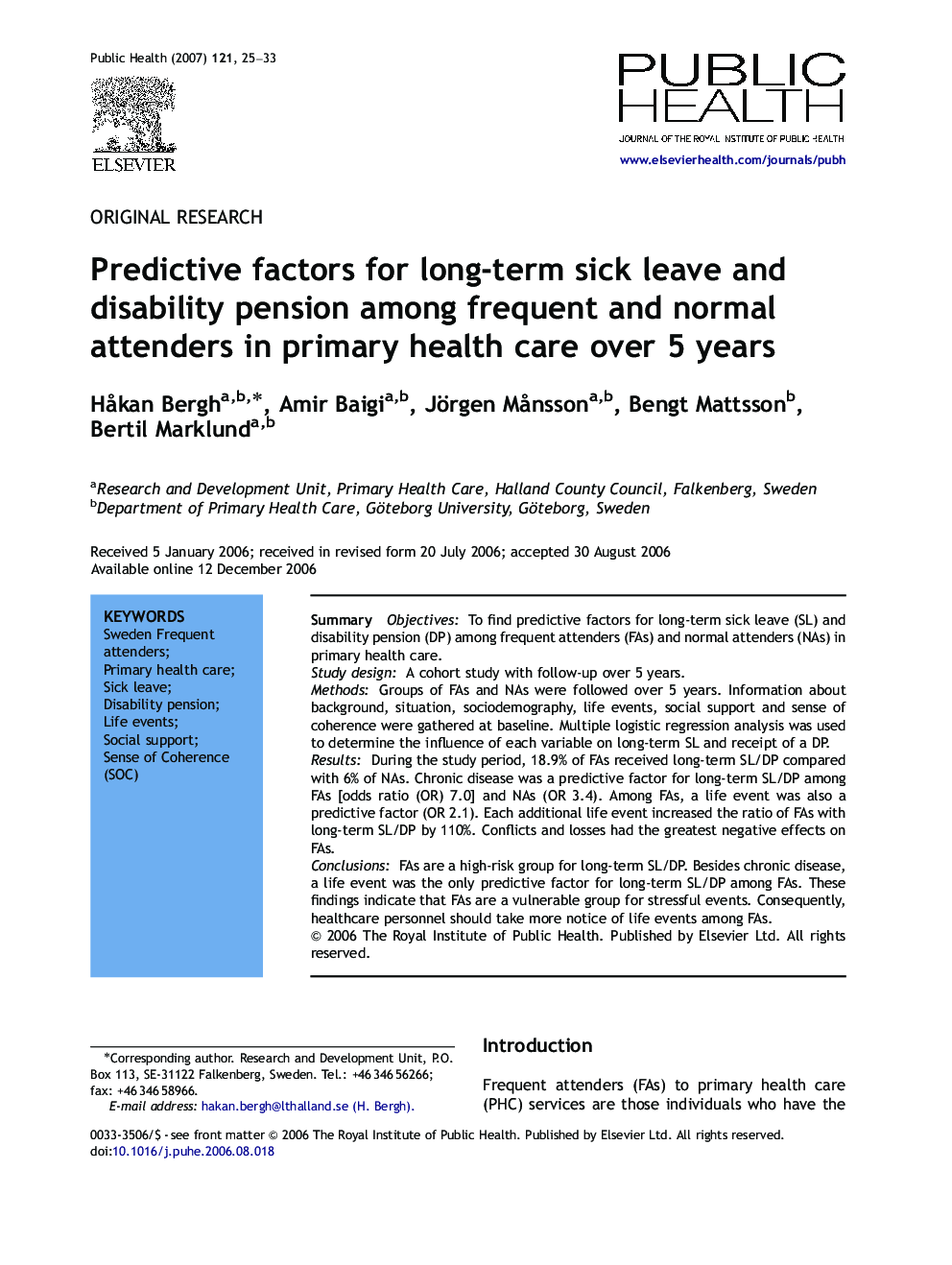| Article ID | Journal | Published Year | Pages | File Type |
|---|---|---|---|---|
| 1088714 | Public Health | 2007 | 9 Pages |
SummaryObjectivesTo find predictive factors for long-term sick leave (SL) and disability pension (DP) among frequent attenders (FAs) and normal attenders (NAs) in primary health care.Study designA cohort study with follow-up over 5 years.MethodsGroups of FAs and NAs were followed over 5 years. Information about background, situation, sociodemography, life events, social support and sense of coherence were gathered at baseline. Multiple logistic regression analysis was used to determine the influence of each variable on long-term SL and receipt of a DP.ResultsDuring the study period, 18.9% of FAs received long-term SL/DP compared with 6% of NAs. Chronic disease was a predictive factor for long-term SL/DP among FAs [odds ratio (OR) 7.0] and NAs (OR 3.4). Among FAs, a life event was also a predictive factor (OR 2.1). Each additional life event increased the ratio of FAs with long-term SL/DP by 110%. Conflicts and losses had the greatest negative effects on FAs.ConclusionsFAs are a high-risk group for long-term SL/DP. Besides chronic disease, a life event was the only predictive factor for long-term SL/DP among FAs. These findings indicate that FAs are a vulnerable group for stressful events. Consequently, healthcare personnel should take more notice of life events among FAs.
